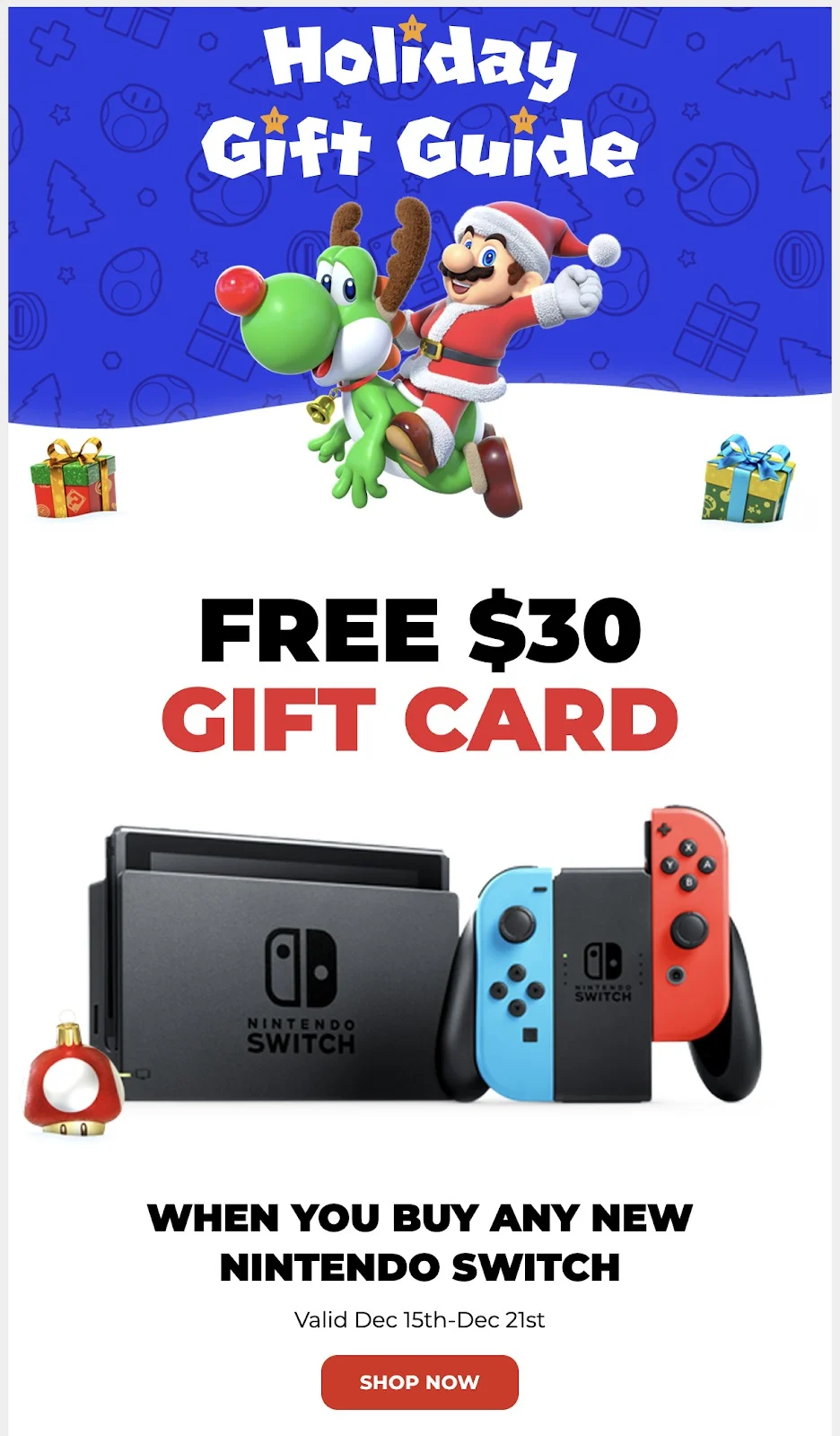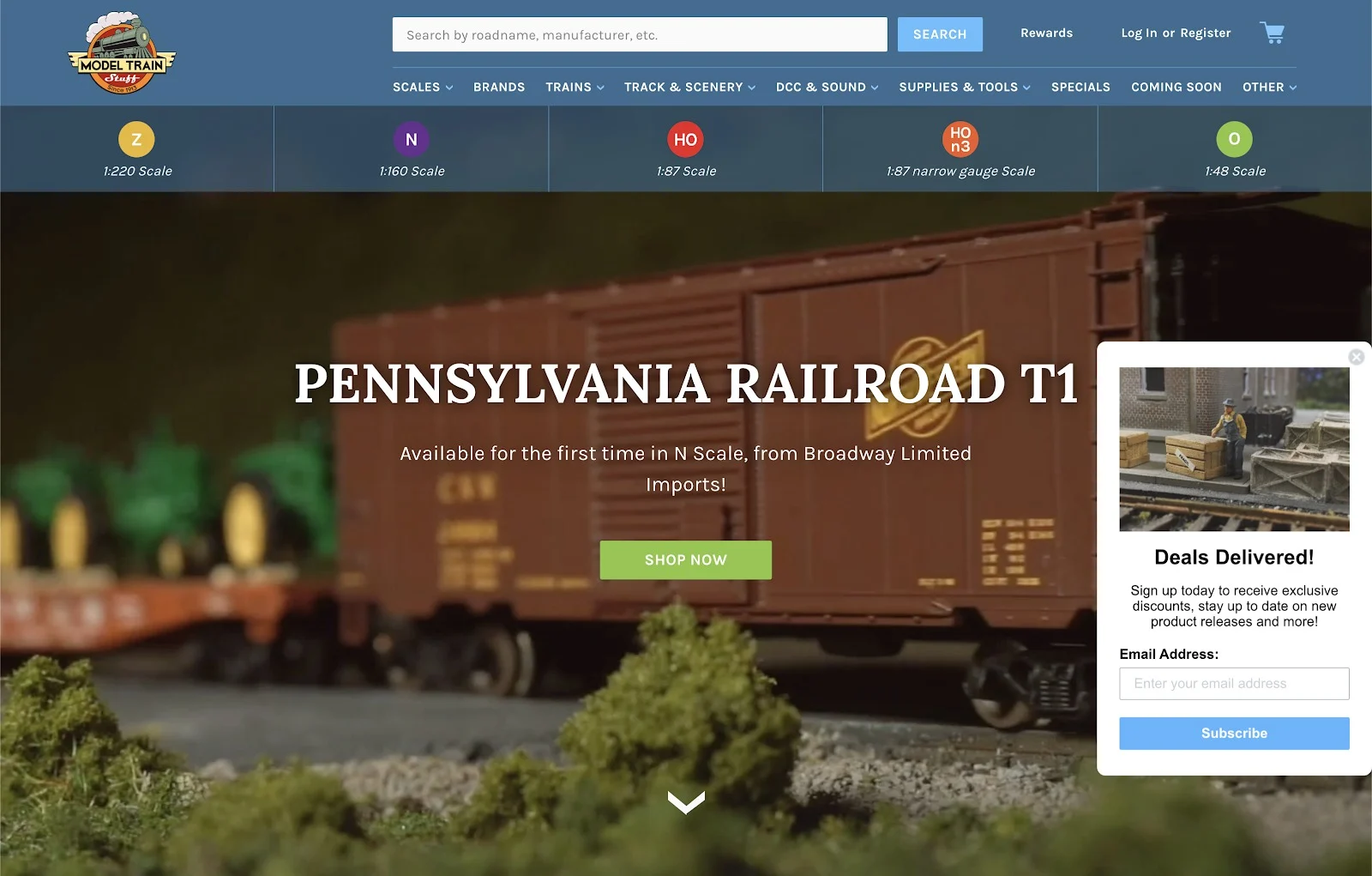Ecommerce Coupon Marketing Strategies: Give Discounts, Get a Lot More


Ecommerce Coupon Marketing Strategies: Give Discounts, Get a Lot More
Get The Print Version
Tired of scrolling? Download a PDF version for easier offline reading and sharing with coworkers.
A link to download the PDF will arrive in your inbox shortly.
Very few shoppers expect to pay full price for products and services when purchased online. With so many retailers now offering new customer discounts and digital coupons, it’s likely a coupon code exists to apply towards your next online purchase.
Retailers regularly add coupons and discounts into their marketing strategies to boost sales conversion rates and increase customer loyalty.
While discounts are certainly attractive to shoppers, digital coupons can also be a successful means of growing a social media following and email marketing list or encouraging mobile website usage.
Savvy online shoppers know how to capitalize on deals and use coupons in conjunction with other offers and cash-back discounts to maximize savings. For retailers, this could mean a less profitable sale.
But marketers are ever increasing their distribution of digital coupons (another 27% vs prior year and will likely continue to grow) to meet the demand of consumers shopping online and via their mobile devices.
How can retailers offer a digital coupon strategy and still meet revenue and profit goals? Let’s find out.
What Are Digital Coupons?
Digital coupons are discounts and promotions offered by retailers to current or prospective customers. Digital coupons are most often aimed at enticing a consumer to make a purchase at the retailer’s website by offering a certain percentage discount, free shipping, or other discount.

Kohler incorporates urgency and a specific coupon code for customers to take advantage of during a limited-time offer.
Physical vs. digital coupons.
Although their purpose is primarily the same, there are a few minor differences between physical coupons and digital versions.
Physical coupons are much more expensive to incorporate into your marketing strategy. Physical coupons incur printing, insertion, and distribution costs, whilst digital coupons can be sent by text, email, and automatically generated communications.
Digital coupons are incredibly easy to send but can get lost in the sea of emails most inboxes now face daily.
Digital Coupons Aren’t Going Anywhere
There doesn’t seem to be any slowdown in the inclusion of digital incentives from retailers. We can expect it to peak during the holiday shopping period, with more incentives selectively offered well into the new year.
More and more, consumers expect coupons along with product and promotional messaging. Retailers that don’t offer them risk being overlooked or losing to a competitor.
1. 90% of consumers use coupons.
Consumers love to feel as if they received a ‘deal.’ It’s a positive feeling and reassuring (even if it’s not as profitable for the consumer) to complete a transaction with some discount or incentive applied.
2. Digital coupon redemptions to surpass $90 billion by 2022.
There’s considerable effort put into making coupon redemption easier and faster today. Giving consumers an excellent user experience is paramount for retailers. Reputation and recognition as a trustworthy retailer depend on it.
With the advancements in user interface design for mobile devices, this number should only continue to rise as more and more consumers grow comfortable using their phones for mobile shopping transactions.
3. 63% of shoppers say they want coupons to be more available.
And who doesn’t? Plus, retailers who offer coupons regularly see repeat business from customers that may have been costly to acquire and have become accustomed to receiving such treatment — in the form of discounts and privileged incentives.
4. Emails with coupons have a 48% increase in revenue per email.
This is no surprise — email has become a highly effective means of delivering personalized content in a timely manner. Marketing strategies that incorporate even a basic level of personalization, like content or product suggestions based on past browsing or purchase history, often perform much better than more generic messaging.
Tying a coupon to such an offer could increase its effectiveness significantly if the recipient, offer, timing, and product mix is right.
3 Downsides to Coupons
Despite many pros, it’s worth acknowledging the cons. Here’s what to watch out for when including coupons in your promotional planning.
1. Lower perceived value.
Coupons, especially when abused by retailers to continually drive volume, will diminish the value of a brand and product. Coupons are often associated with close-out items, discount retailers, end-of-life products, and the tactic that simply moves an unsuccessful product.
Even though there’s no intent on the merchant’s part to lower the value proposition, the somewhat negative connotation that’s associated with discounting a product or service that should be priced right to begin with, will diminish value and raise consumers’ expectation to get it at a lower price.
2. Delayed and less profitable sales.
There’s certainly a risk of delaying sales when coupons are regularly used in marketing. This is especially true for repeat customers — you’re, in essence, training them to wait for a better deal. Be certain to include coupons and incentives on specific items that need an extra boost, not those that are already selling at acceptable market value.
The additional risk here is to your bottom line. Coupons are a marketing expense — whether to acquire new customers or retain current ones — with additional costs. This isn’t a sustainable strategy and will churn customers at a higher rate than competitively pricing your products and providing an excellent overall product and purchasing experience.
3. Higher shopping cart abandonment.
Have you ever placed an item in your cart at an online store only to get distracted and abandon your purchase? Without knowing it, many retailers inadvertently cause customers to do this daily by simply including a prominent coupon or discount code area in their checkout experience.
Those customers who had every intent to purchase without an additional incentive have now found a reason to hunt for a coupon online, therefore increasing cart abandonment if they don’t find one.
Improving the checkout flow and placing less focus on coupon code entry fields could increase your checkout conversion rate — without the need or reliance on less profitable sales to meet your revenue goals.
Types of Digital Coupons
Although there are many coupons out there that can be applied in a multitude of ways, these are the most common you’ll find. Retailers are always looking for novel ways to entertain guests and keep them on their websites longer. This may involve a reward or incentive in the form of a coupon that can be applied on their next purchase.
Retailers may also require a trade for such value in the form of information. In exchange for your email address, survey completions, or other information they can use to better tailor the shopping experience, retailers will withhold or “gate” the coupon until you’ve completed their request. It’s not uncommon to see this in the form of a popup or onscreen survey.
1. Downloadable coupons.
These types of coupons are accessible to consumers from a number of different locations. Customers download coupons from a company’s website, directly from an email, or via social media. Most of the time, these coupons are accessible from mobile devices as well.

Retailer Michaels uses downloadable coupons throughout the customer journey which are integrated into their app and website.
2. Mobile coupons.
Ecommerce platforms that have integrated mobile applications into their operations offer mobile-only coupons to drive further sales in this channel.
3. Promo codes.
The growing popularity of ecommerce has greatly contributed to the rise of promo codes. This form of discount is faster than downloading a coupon and is easier for the customer to complete at the point of sale.
These codes consist of a combination of brand-unique numbers and letters and are often applied during the checkout process. They can be one-time use, personalized for an individual, or a generic code that can be shared.
4. Automatic discounts.
Discounts that are automatically applied at checkout are increasing in popularity because the consumer doesn’t have to do anything to receive a discount. These work well for ecommerce companies because online retailers are enticing customers with an offer for a discount, therefore reducing shopping cart abandonment and churn rate.

Gamestop __often includes incentives that don’t violate the rules regarding manufacturer advertised pricing (MAP) with the inclusion of their own gift cards with purchase.
Strategize Your Coupons and Boost Ecommerce Sales
When used wisely, coupons can add a considerable amount of top-line revenue with just a small allocation of marketing dollars. A cost, but with big returns. Here are some of the biggest potential benefits of incorporating coupon campaigns into your marketing efforts.
1. Get rid of poor selling and slow-moving items.
Some items just don’t sell as well as others. The best way to get rid of these items? Offer a steeper discount so you can at least break even. Sometimes a percentage discount as low as 10% will help items fly off the digital shelves.
However, take into consideration your gross profit. Couponing isn’t only about the cash grab. It’s also an opportunity to increase coupon amounts over time. You may find a 15% discount works just as well as the 25% off you were willing to offer first.
2. Build your email list.
Data is very valuable, especially if it’s data from potential customers. Many ecommerce shops offer a small discount if you sign up for their email list. You can do this too, and quickly build a 1,000+ person email list by only giving away a 10% discount! 10% is still a valuable incentive even though there are higher discounts being offered online.

Visitors to Model Train Stuff can receive exclusive offers and information on products by signing up to their email newsletter list.
3. Incentivize customers to spend more.
Adding spending thresholds is an excellent way to boost average order values and use automatic coupons during promotion periods. For instance, it’s not hard to incorporate messaging such as, “You’re only $20 away from a 20% discount on your entire order!”
This gives the consumer a reason to shop more on your site and increases the chances of them adding more to their order. Using an automatically applied coupon or discount here is a great reward for your shopper.
4. Measure channel effectiveness.
Coupons can also be used as a channel tester. If you put a different 10% code on Facebook, Instagram, and an email campaign, you can see which channel performs best. While it’s not a very scientific test, it will give you guidance over time (assuming there’s enough volume) as to which channel your customers react to such offers best in. This can give you some great insights into where you should focus your marketing dollars.
5. Boost your referral program.
Most referral programs essentially run on coupons and discounts. Referrals are for both existing customers and new acquisitions, or “friends.” Each receives a coupon for taking an action.
The existing customer introduces a new prospect to the store with a coupon for them to use. Once the new prospect, now a customer, places an order, the original customer receives a discount or reward coupon that can be applied to their next order.
6. Add a time restraint.
“Order by 12 p.m. on December 31 to get 20% off!”
The urgency factor — or FOMO (Fear Of Missing Out) — is a tremendous conversion driver. This kind of time restraint will actually push a lot of customers into checking out. Be sure to make your window of opportunity realistic, but not so far into the future where it could lose its effectiveness.
7. Get customer feedback.
“Take a 5 minute survey and get 20% off!”
These short surveys can be the key to improving your business in a handful of ways and are worth far more than the 20% coupon. Collectively, this information could help you craft a much better experience and become less reliant on discounts in the future.
8. Target holidays.
Using “Santa Claus” as a coupon code for Christmas, or “USA” for the 4th of July, can help you celebrate with customers. It’s also more applicable and memorable to utilize popular culture in your marketing strategies. It’s a repeatable campaign that can be changed to meet your business needs annually.
Marketing Your Coupons to Customers
Once you have a solid, forecastable coupon strategy, you need to get the word out. Here are some common methods that won’t break the bank. These are proven tactics and should yield positive results. You can also repeat some of these within the campaign’s timeframe without risking attrition.
1. Email.
Include a coupon code in your emails whenever you’re doing clearance sales, new product launches, etc. Don’t forget system-generated and transactional emails, too. Although they have a specific purpose, as long as that information is delivered first, including an additional incentive is a good test to measure results.
2. Social media.
List a 24-hour-only coupon on your Instagram and Facebook story! This creates urgency, timeliness, and a recipe for the ultimate in share-ability. Asking a follower to share a good deal increases your exposure, engagement, and brand efforts.
Be resourceful and creative here since there are literally thousands of other offers and sponsored ads in people’s feeds. You really need to stand out from the crowd to make this a profitable venture. Make sure reliance on your coupon isn’t the only key factor.
3. Advertisements.
Anything from Facebook ads to Google Display ads can have a coupon code in the image. This not only incentivizes customers to click but also helps you get insight on which channel they used. Paid ads are often paired with incentives to offset some costs while driving volume.
4. SMS.
More stores are opting to send discounts via text message in order to get customers to check out on their mobile platform. Permission here is key, and opt-out rates are still very low and acceptable. Offering a coupon to allow SMS messaging is a great way to build your text list.
Be responsible with texting since this is still a new medium for retailers and can easily cross the ‘what’s acceptable’ line when it comes to direct communications.
5. Affiliate links.
Offering affiliate links with discounts attached can be one of the easiest ways to get customers to buy. Affiliate link sharing is as close to word-of-mouth marketing as you’ll get. Utilizing a strong network of affiliates can reduce marketing costs, acquisition costs, and ad spend.
6. Influencer coupon codes.
Influencers will often have their own coupon codes. This way you can link up with an influencer, give them a unique coupon code, and track how that particular influencer’s promotion performed.
7. Physical events.
Attending trade shows, festivals, and local events are excellent brand-building tactics. Offering incentives and show-only specials in the form of a coupon along with real face-to-face marketing exponentially increases your chances of converting new fans and customers.
Conclusion
Coupons are certainly an attractive way to boost volume and sales. Incorporating them into your marketing mix can quickly build your customer file and temporarily increase your conversion rates. While there isn’t a true substitution for providing quality products and fair pricing, coupons do a great job supporting those efforts when the competition heats up or consumer expectation dictates it.
Plan well and budget accordingly, because getting hooked on couponing can be a very costly, unsustainable strategy many businesses can’t afford. Coupons alone will not build your brand equity, but delivering a far superior experience with a smart coupon strategy and a quality product can.

An avid UX/UI evangelist and conversion optimization veteran, Rus has been in digital marketing and ecommerce for 25+ years and is currently a writer at Bolt. He has been recognized as a critical thinker, ecommerce and design authority, and continues today as an engaging, strategic leader for global merchants.


